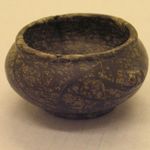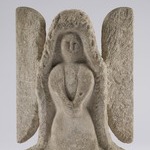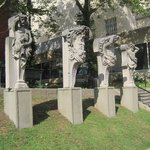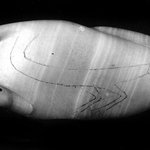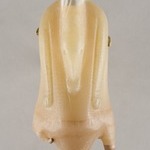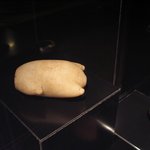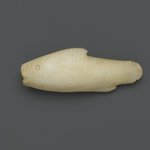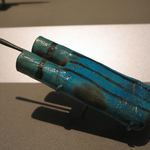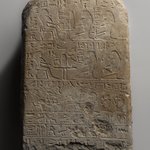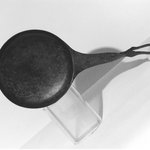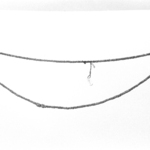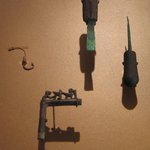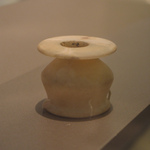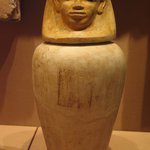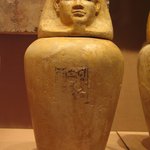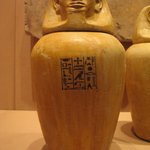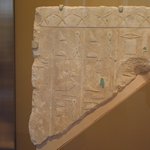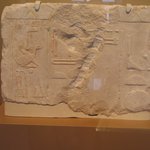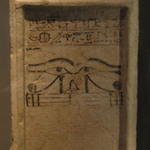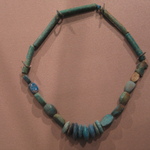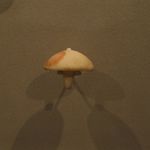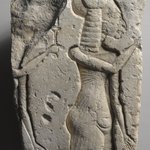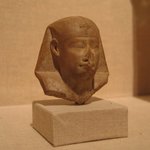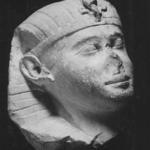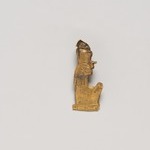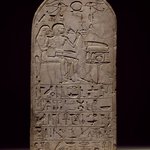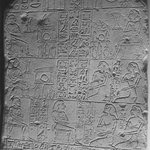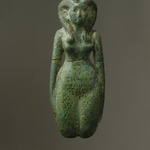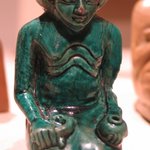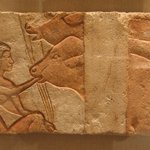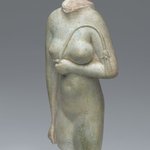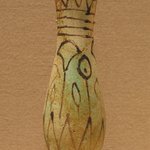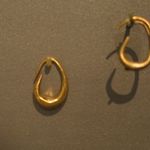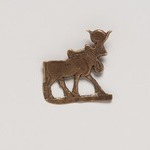
Four Model Vessels on Common Base
Egyptian, Classical, Ancient Near Eastern Art
On View: Egyptian Orientation Gallery, 3rd Floor
Model Food Offerings
Over time, new subjects came to be depicted within the tradition of displaying models of food offerings.
New Kingdom Egyptians continued the Middle Kingdom tradition of leaving smallscale replicas of food as funerary offerings in tombs. Although some types were known earlier—such as the trussed duck and miniature vessels—a new subject was the gazelle. As desert dwellers, gazelles symbolized the chaos that existed in the sterile lands flanking the Nile Valley. Bound gazelles therefore represented the desire for eternal control over chaos.
Over time, new subjects came to be depicted within the tradition of displaying models of food offerings.
New Kingdom Egyptians continued the Middle Kingdom tradition of leaving smallscale replicas of food as funerary offerings in tombs. Although some types were known earlier—such as the trussed duck and miniature vessels—a new subject was the gazelle. As desert dwellers, gazelles symbolized the chaos that existed in the sterile lands flanking the Nile Valley. Bound gazelles therefore represented the desire for eternal control over chaos.
MEDIUM
Limestone
DATES
ca. 1539–1075 B.C.E.
DYNASTY
Dynasty 18 to Dynasty 20
PERIOD
New Kingdom
DIMENSIONS
1 9/16 x 3 1/4 x 3 1/8 in. (4 x 8.3 x 8 cm) (show scale)
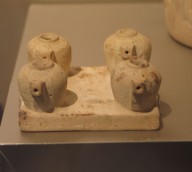


COLLECTIONS
Egyptian, Classical, Ancient Near Eastern Art
ACCESSION NUMBER
37.1388E
CREDIT LINE
Charles Edwin Wilbour Fund
CATALOGUE DESCRIPTION
One group of four limestone model jars on a common base (square). Each jar occupies a corner of ther square. Each is shaped like a teapot, and all spout point in the same direction.
Condition: Excellent. Some staining and superficial grease and dirt. Spouts are drilled---though not completely through.
EXHIBITIONS
MUSEUM LOCATION
This item is on view in Egyptian Orientation Gallery, 3rd Floor
CAPTION
Four Model Vessels on Common Base, ca. 1539–1075 B.C.E. Limestone, 1 9/16 x 3 1/4 x 3 1/8 in. (4 x 8.3 x 8 cm). Brooklyn Museum, Charles Edwin Wilbour Fund, 37.1388E. Creative Commons-BY (Photo: Brooklyn Museum, CUR.37.1388E_erg456.jpg)
IMAGE
overall, CUR.37.1388E_erg456.jpg. Brooklyn Museum photograph, 9/6/2007
"CUR" at the beginning of an image file name means that the image was created by a curatorial staff member. These study images may be digital point-and-shoot photographs, when we don\'t yet have high-quality studio photography, or they may be scans of older negatives, slides, or photographic prints, providing historical documentation of the object.
RIGHTS STATEMENT
Creative Commons-BY
You may download and use Brooklyn Museum images of this three-dimensional work in accordance with a Creative Commons license. Fair use, as understood under the United States Copyright Act, may also apply.
Please include caption information from this page and credit the Brooklyn Museum. If you need a high resolution file, please fill out our online application form (charges apply).
For further information about copyright, we recommend resources at the United States Library of Congress, Cornell University, Copyright and Cultural Institutions: Guidelines for U.S. Libraries, Archives, and Museums, and Copyright Watch.
For more information about the Museum's rights project, including how rights types are assigned, please see our blog posts on copyright.
If you have any information regarding this work and rights to it, please contact copyright@brooklynmuseum.org.
RECORD COMPLETENESS
Not every record you will find here is complete. More information is available for some works than for others, and some entries have been updated more recently. Records are frequently reviewed and revised, and we welcome any additional information you might have.
